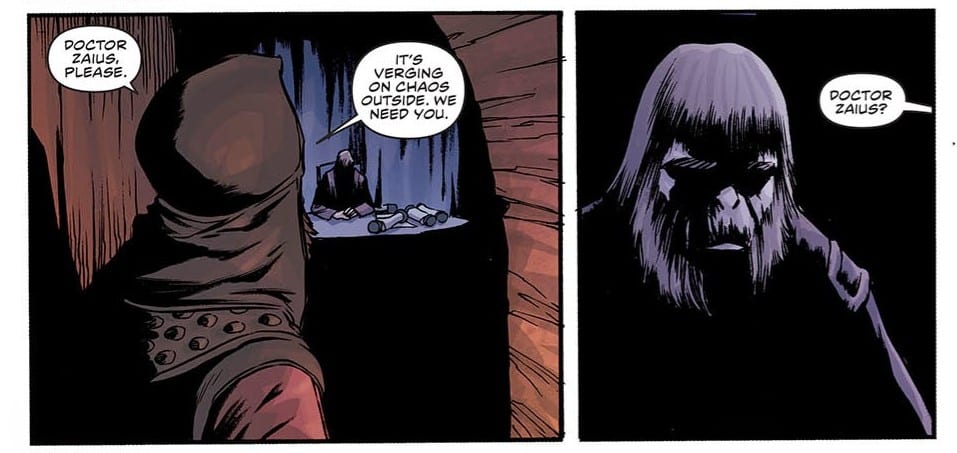The Planet of the Apes franchise has achieved a lot considering the entire planet, and all of its inhabitants, was destroyed at the end of the second movie. In fact the entire series, books and comics included, is packed with violence and destruction.
Despite all of the devastation within the Ape stories, it is not necessarily this aspect that people associate with the franchise. People remember the Statue of Liberty, the Alpha/Omega bomb, the hoards of apes charging into battle against a militarised human outpost, however, it is the themes behind these sequences that resonate with the audience.
So, the question becomes, why so much destruction in the first place?
MFR ON YOUTUBE (latest video)
Help us reach 5K Subs!
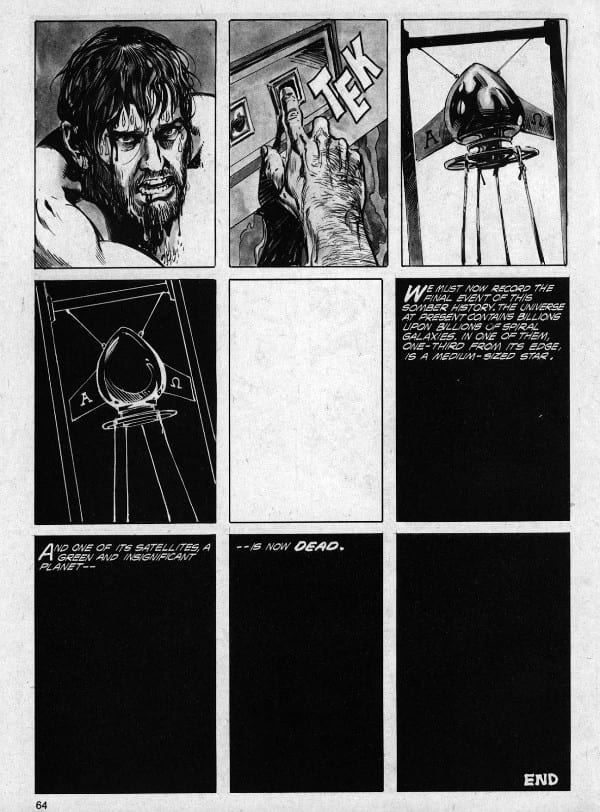
Resolution on the Planet of the Apes
The ending of the second movie, Beneath, has the largest destructive force unleashed anywhere in the Ape Franchise but it is not the first example of utter destruction. That award would go to the ending of the first movie and the implications that the scene makes. As Taylor, the astronaut out of time played by Charlton Heston, rides into the wilderness looking for Truth he finds the remains of the Statue of Liberty and the remnants of his past.
The scene illustrates the destructive force of the Humans and annihilation that Taylor feared would come from the outset of the movie. Taylor was a pessimist, he was running away from his own kind because he saw nothing good in them. His journey across the Planet of the Apes rekindled some of his softer feelings for what he left behind. This made the shock of his true predicament that much worse. Taylor was in the process of being redeemed but it turned out to be too little too late.
The ending of the first movie was a warning against turning a blind eye, against hiding and hoping that someone else would clear up the mess. It was also about bringing a story to an end. The discovery of the Statue of Liberty closed the chapter on Taylor’s hope for the Human race. There was no saving his people, no redemption. The original ending, as written by Rod Serling, took this idea one step further.
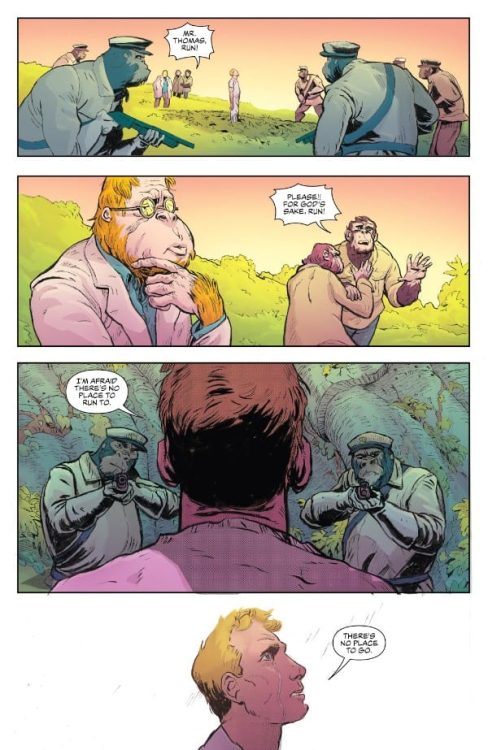
Original Endings
In the original script, which was released in Graphic Novel form by Boom! Studios in 2018, the man Thomas discovered the same remains as his counterpart Taylor. The build up shows Thomas running through the fields, chased by Police Gorillas and followed by the Chimpanzees he had befriended. Suddenly he stops and stares into the foreground. Despite his friends shouting for him to run he simply stands still, in awe of something the reader can’t yet see. His last words “There’s no place to go,” signifies the remains of his hope leaving him and, with a tear on his face, he is gunned down. Only then is it revealed what he was staring at, the now famous Statue of Liberty remains.
This ending is in some ways more upsetting than the filmed version. This is partially because the character of Thomas is less pessimistic than his movie counterpart. He embraces his situation with more vigour and fights not only for survival but for his way of life. Therefore, when he comes face to face with the destruction caused by his own kind, his spirit is destroyed as completely as the world he came from.
In the graphic novel adaptation by Dana Gould, illustrated by Chad Lewis and David Wilson, Thomas is shown running into the wilderness, the ‘Thup thup thup’ of a helicopter in the background like the sound of a beating heart. This ominous air is replaced by a shadow falling across the panels, finally to cast Thomas in darkness while the background behind him is showered in light.
On the following two pages Lewis and Wilson depict a man losing his will to live. The panel with his last words is devoid of any background, the only panel in this sequence to be displayed in this manner, and it emphasises the moment. This is the point where the effects of all of the destruction is best realised. Even before the reveal, Thomas’ spirit is broken in that single moment. He gives up and almost welcomes the hail of bullets that end his life.
What Serling was suggesting here is that the cost of all of Human Kind’s hatred, greed and intolerance is the destruction of the soul, of the spirit. In the end, things come and go, but once Hope has been destroyed there is no redemption, no coming back, there is only the end.
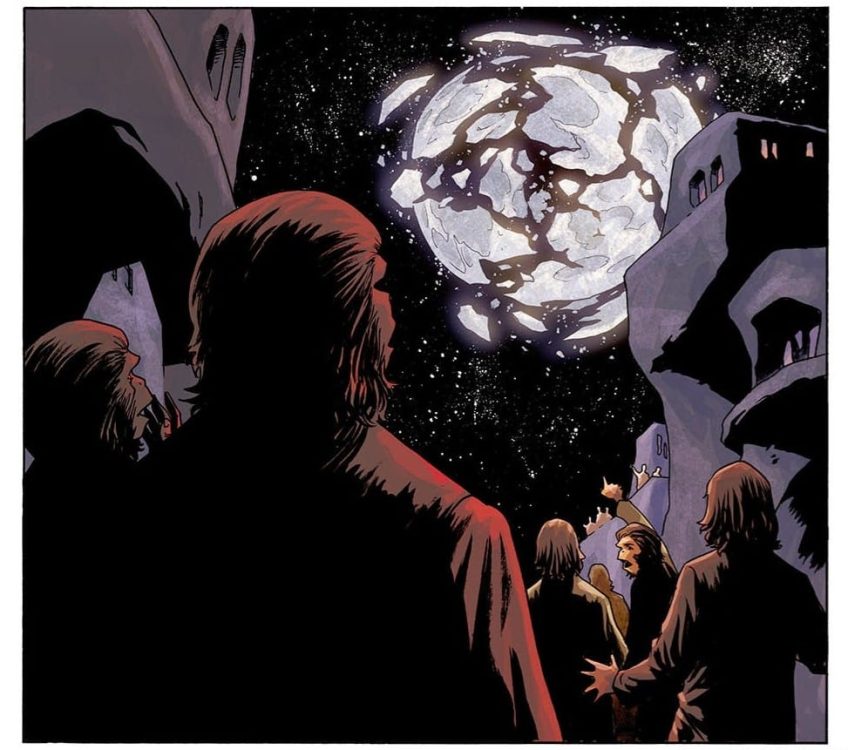
A New Cataclysm
It’s not just the Human’s who are victims of destruction, the Apes suffer too. Throughout the movies and the comic series, the Apes are often persecuted, hunted, and killed at the behest of the Humans.
In the Boom! Studios prequel tale Planet of the Apes Cataclysm, a biblical epic unfolds over the eight years before Taylor arrives from the past. Corinna Bechko and Gabriel Hardman start their story off with the destruction of the moon and the events that follow read like the 10 plagues of Egypt. Meteor showers, floods, and starvation face the Apes as they try to adapt to their new climate.
The devastation and subsequent trials are merely plot devices, however, for Bechko and Hardman’s examination of Ape society and some of the characters that live within it. Cataclysm tells the backstory of the major ape players from the original film; Zaius, Cornelius, and Zira. It follows them through the turbulent times as they meet and get to know each other.
In contrast to the destructive ending of Taylor and the Human Race’s story, in Cataclysm, it heralds in the beginning of the characters so beloved of the franchise.
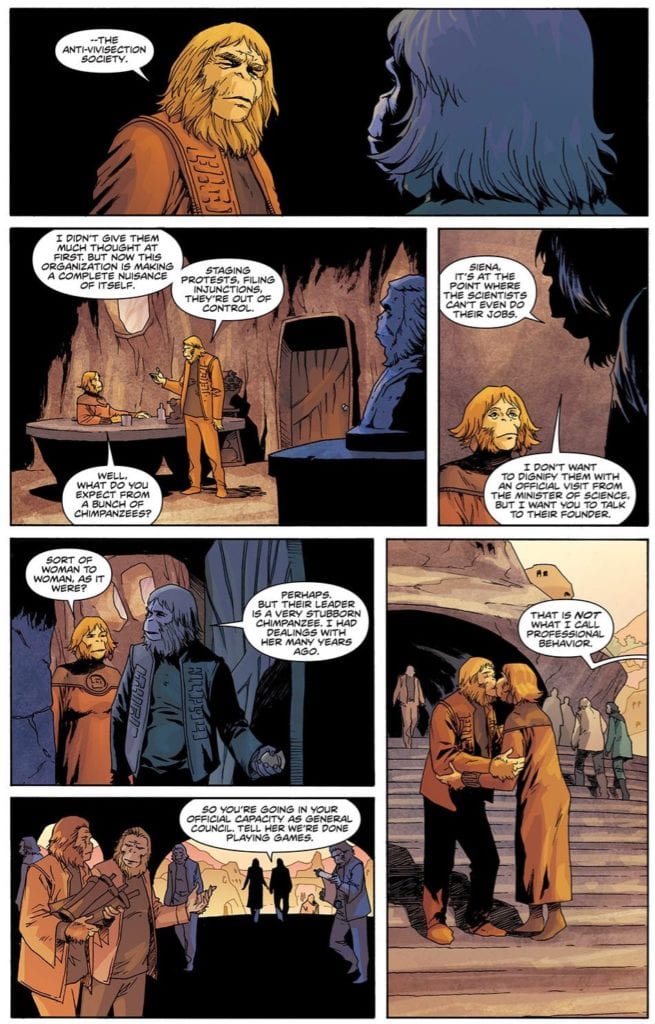
Character Breaking
The tragic events depicted at the beginning of Cataclysm affect the characters featured in a number of different ways. Sometimes the result is for the better, others not so much. At times it leaves you wondering what would the characters have become under different circumstances.
Take Doctor Zaius as an example. The destruction of the moon has the greatest impact on his life. At the start of the series the orangutan is depicted as a loving father and husband. He shows compassion towards other Apes and extends the hand of friendship towards those who stand against him. In the opening issue Zaius sends his wife, Siena, to talk to the leader of The Anti-Vivisection Society as a way of appeasing an awkward situation instead of antagonising it.
This is when disaster strikes and over the course of the series, Zaius becomes more like the suspicious, keeper of secrets that we all know and love. Through the reign of destruction he is forced into the role of Leader of the Council when he witnesses the death of the other council members. He also loses his daughter, who dies giving birth in the middle of the chaos, and his wife is nearly killed.
As the new leader he has to make a number of decisions under difficult situations. Making this harder is a Brother of the Faith who turns out to be a human mutant in disguise, manipulating the Apes minds but also Zaius’ decisions.
Damien Couceiro’s depiction of Zaius changes across the run. To start with he is always shown in a positive light, standing up straight with his head in the air. The reader sees him as a strong, reliable figure of the community. As fire rains down and Ape City is torn apart, so too Zaius’ stature is diminished. He becomes down beat as if the weight of the world is on his shoulders. Colorist Darrin Moore uses darker tones and shadows creep across his face and body.
With each new disaster that threatens Ape City, Zaius is broken a little bit more. He soon becomes cynical, distant from family and the needs of community. Ultimately he becomes like Taylor at the start of the first movie: bitter and broken. The front cover of issue 6, drawn by Mitch Breitwiser, sums the character up perfectly. Zaius has become a mere reflection of his former self, lost in the debris of the once great city.
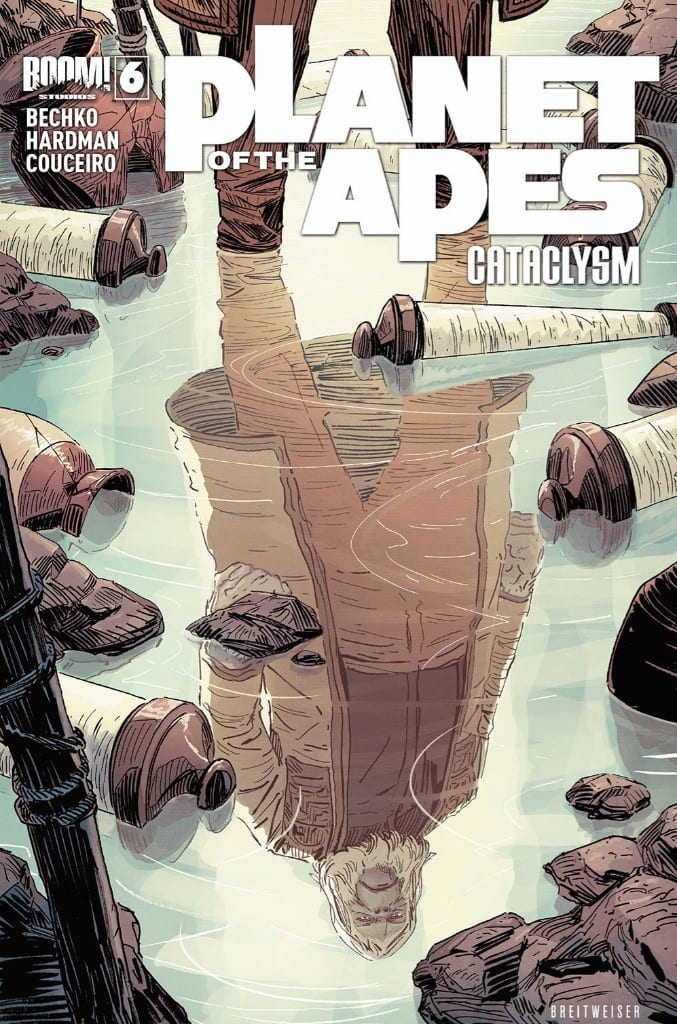
Hope in the Chaos
Each of the major characters in Bechko and Hardman’s Planet of the Apes tale is directly affected by the violence and destruction around them. It is easy to argue that without the disasters the characters wouldn’t become who they are. The chimpanzees would not have a need to challenge the authority of the Council. Zaius would not have travelled the path towards a war of self-righteousness. Cornelius would not have met Zira.
The stories within the franchise are driven by the need for survival and striving against the odds. From the very beginning a destructive adversity has formed the foundations of Planet of the Apes. From Caesar’s parents being mercilessly gunned down by order of the American President’s Science Adviser, to the violent uprising of the Apes, and through to the mindless war with the mutants. But a foundation is all that it is: everything that makes the world and the stories so engaging are built upon the back of this. The characters grow and take their full shape in response and reaction to the very worst circumstances possible.
The history of literature is littered with violence and destruction with some of the most famous stories centred around these themes. As a species we are drawn to these types of stories so it goes without saying that Planet of the Apes would capture the imagination of fans for decades. However, the true brilliance of stories like Cataclysm is not the action or the devastation but the characters that grow and survive within the hostile environment.
Various volumes of BOOM! Studios’ Planet of the Apes comics are currently available to buy.
